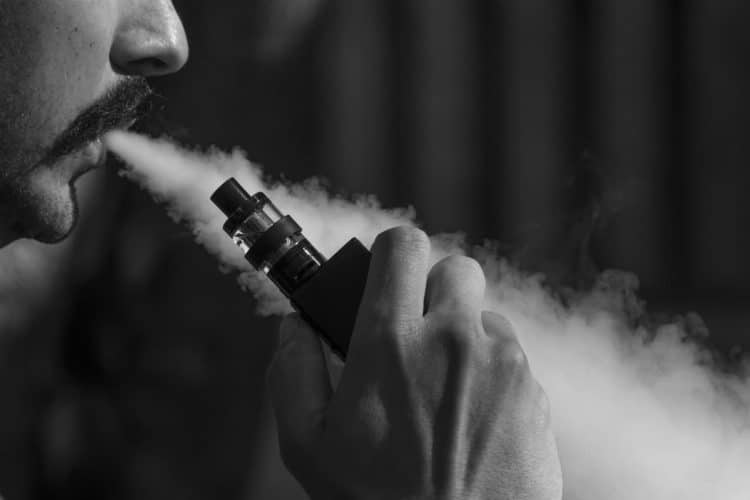Fortunately, lung injuries from vaping and e-cigarette use have declined in 2020 after peaking in the autumn of 2019. This is positive news from the CDC, as a continued vaping crisis could have caused some severe issues in already crowded hospitals—especially since lung damage is a symptom of COVID-19. EVALI, the acronym that was given to the new disease caused by vaping injuries, stands for e-cigarette or vaping product use-associated lung injury. There were nearly 3,000 cases of EVALI from the summer of 2019 to February 2020, with the number declining last winter.
What Causes EVALI?
In February 2020, the New England Journal of Medicine declared that many lung injuries and even deaths were associated with vitamin E acetate (VEA). [1] This substance was found in the lung fluid of over 50 patients across 16 states. [1] Researchers also conducted a study exposing 30 mice to aerosols of either VEA, propylene glycol (PG) and vegetable glycerin (VG), or a control (air). [2] Mice exposed to VEA showed significant injury to the lungs compared to the other two conditions. [2] The formation of toxic ketene gas upon heating VEA has been suggested as a possible explanation.
However, an even more recent study published by the Journal of the American Heart Association concluded that EVALI may not depend on any additive, including VEA. [3] Instead, these researchers reported that heating elements were to blame: an aerosol of PG and VG with a stainless-steel element did not cause lung injury, but the same aerosol with a nickel-chromium alloy element caused significant acute lung injury.
The aerosol did not contain VEA, tetrahydrocannabinol (THC), or nicotine, and the condition matched EVALI symptoms. They thus warned of “potential danger of operating electronic cigarette units at high settings; the possibility that certain heating elements may be deleterious; and that [EVALI] may not be dependent upon tetrahydrocannabinol, vitamin E, or nicotine.” [3]
Diagnosis of EVALI
Professional medical diagnosis of EVALI presents several difficulties because symptoms are similar to the flu and other illnesses that impact the respiratory system, like cough, shortness of breath, nausea, and so on. Remarkably, increased rates of vaping are correlated (nationally) to lower EVALI cases. The illegality of cannabis is associated with higher rates of the illness, pointing to the black market as a key culprit.
Hold Manufacturers Accountable
As more states legalize recreational cannabis and establish medical programs, harmful and unregulated vape products containing dangerous ingredients like VEA should stay relatively low. However, we as consumers have a responsibility to our fellow vape users and cannabis enthusiasts to hold bad actors accountable so we can avoid another vape crisis and eliminate EVALI.
Image by Ethan Parsa from Pixabay
References
- Blount BC, et al. Vitamin E acetate in bronchoalveolar-lavage fluid associated with EVALI. N Engl J Med. 2020;382:697-705. [Impact Factor: 74.699; Times Cited: 137]
- Bhat TA, Kalathil SG, Bogner PN, Blount BC, Goniewicz ML, Thanavala YM. An animal model of inhaled vitamin E acetate and EVALI-like lung injury. N Engl J Med. 2020;382(12):1175-1177. doi:10.1056/NEJMc2000231. [Impact Factor: 74.699; Times Cited: 32]
- Kleinman MT, et al. E-cigarette or Vaping Product Use–Associated Lung Injury produced in an animal model from electronic cigarette vapor exposure without tetrahydrocannabinol or vitamin E oil. Journal of the American Heart Association. 2020;9:e017368. doi: 10.1161/JAHA.120.017368. [Impact Factor: 4.45; Times Cited: n/a]












